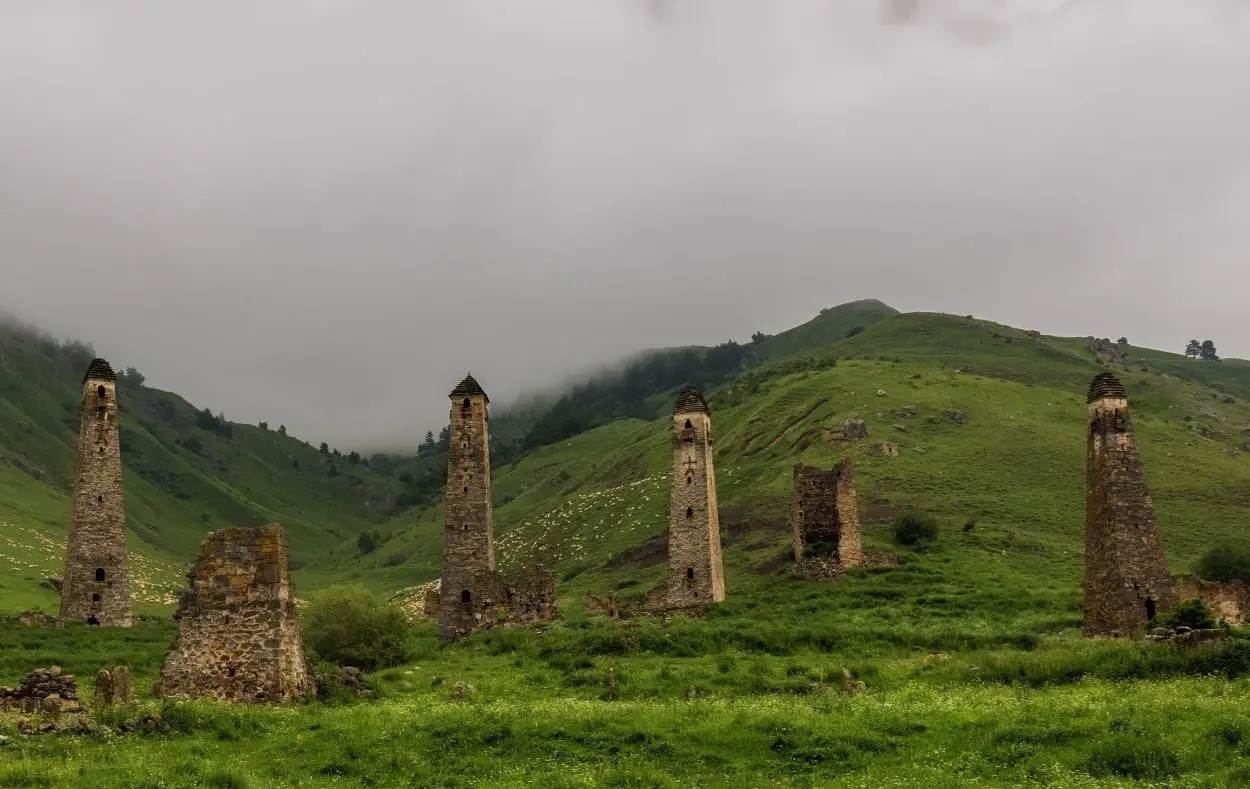Across the North Caucasus of Eastern Europe, are structures built in the characteristics of Vainakh tower architecture for defensive or domestic use, that were constructed by the Nakh peoples in Chechnya, the Republic of Ingushetia, and north-eastern Georgia.
“Nakh” was coined in the Soviet period to accommodate the wider linguistic family of Vainakh languages, which were spoken by groups of ethnic Chechen, Ingush and Kist peoples.
The oldest examples of Vainakh tower architecture dates from the 1st century AD, with the most active period of tower construction dating from the 15th–17th century AD.
Domestic towers were usually built on a square or rectangular base, with tapering walls that rose up to four floors in height. The upper stories were generally used for habitation, whilst the lower levels were intended for livestock and grain storage. Towers were traditionally built in a period lasting no more than 365 days, with every well-to-do family in a community obliged to construct one.

Songs and folk tales emphasise the role of the “master builder”, who, according to tradition, would direct a group of assistants who did the actual work. Some of these masters had their names preserved—such as Diskhi, associated in the local tradition to the military tower of Vougi, and Yand of the Ingush settlement Erzi.
Military towers were narrower than domestic towers, rising up to four of five floors and served as watchtowers, signalling beacons, guard posts or fortified shelters for protection against raids. In some places, such as at Mount Bekhaila, several towers were enclosed in a common wall to create a small fortress.
Defenders would fight off invaders by firing arrows through loopholes, or by throwing stones or other material, such as boiling water or oil from a box-machicolation (a floorless overhanging balcony). Construction of military towers began in the 10th and 11th centuries AD and peaked between the 14th and the 17th centuries.
Header Image Credit : Vyacheslav Argenberg – CC BY 4.0





